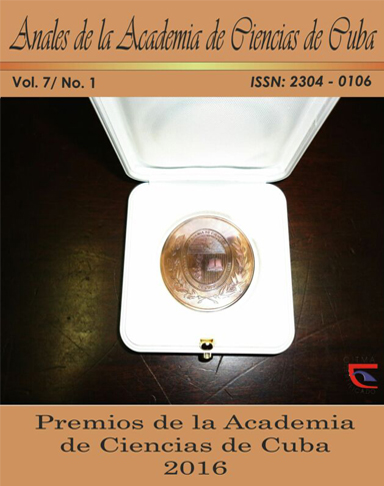CARACTERIZACIÓN FENOTÍPICA Y GENÉTICA DEL SÍNDROME DE SMITH LEMLI OPITZ EN CUBA
Abstract
El Smith Lemli Opitz (SLO) es un síndrome malformativo, debido a una deficiencia de la enzima 7-dehidrocolesterol (7DHC) reductasa que cataliza la última reacción de síntesis de colesterol, lo que provoca una deficiencia de este metabolito y un incremento de su precursor, el 7DHC, cuya detección es la clave para el diagnóstico definitivo, lo cual también puede realizarse por la identificación de dos mutaciones en el gen DHCR7. El diagnóstico es esencial para el asesoramiento genético incluyendo el tratamiento con dietas ricas en colesterol. Antes del 2001 no existían en Cuba evidencias de estudios sobre esta enfermedad, no se disponía de la tecnología requerida para el diagnóstico y en consecuencia los pacientes y sus familiares no se beneficiaban de los avances alcanzados a nivel mundial; lo cual sirvió de justificación para desarrollar un estudio nacional entre los años 2001 y 2011 (y posteriormente generalizado), con el propósito de caracterizar fenotípica y genéticamente a los pacientes cubanos con SLO y evaluar la correlación entre los fenotipos clínico y bioquímico y el genotipo DHCR7.Downloads
Downloads
Published
How to Cite
Issue
Section
License
The journal Anales de la Academia de Ciencias de Cuba protects copyright, and operates with a Creative Commons License 4.0 (Creative Commons Attribution-NonCommercial License 4.0). By publishing in it, authors allow themselves to copy, reproduce, distribute, publicly communicate their work and generate derivative works, as long as the original author is cited and acknowledged. They do not allow, however, the use of the original work for commercial or lucrative purposes.
The authors authorize the publication of their writings, retaining the authorship rights, and assigning and transferring to the magazine all the rights protected by the intellectual property laws that govern in Cuba, which imply editing to disseminate the work.
Authors may establish additional agreements for the non-exclusive distribution of the version of the work published in the journal (for example, placing it in an institutional repository or publishing it in a book), with recognition of having been first published in this journal.
To learn more, see https://creativecommons.org






